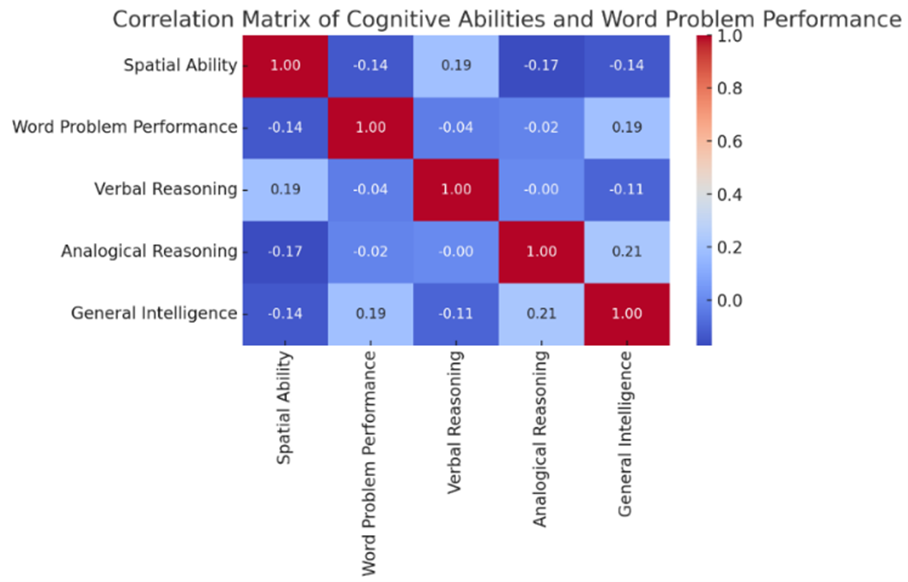Unpacking the Role of Spatial Ability in Solving Mathematical Word Problems: A Network and Correlational Approach
Keywords:
Spatial Ability, Mathematical Word Problems, Cognitive Network Analysis, Structural Equation Modeling (SEM), Verbal Reasoning, Analogical ReasoningAbstract
Spatial ability has long been considered an essential component of mathematical thinking, yet its specific role in solving word problems remains underexplored. This study investigates how spatial ability contributes to the mental representation and solution of mathematical word problems, using both correlation and network analysis methods. A sample of 100 students was assessed on a battery of cognitive measures, including spatial ability, verbal reasoning, analogical reasoning, general intelligence, and word problem performance. Structural equation modeling (SEM) and partial correlation network analysis revealed that spatial ability holds the highest centrality in the cognitive network, with strong direct associations to word problem performance and related cognitive domains. Correlation heatmaps and network diagrams supported the robust influence of spatial ability over other cognitive skills. These findings align with recent research emphasizing the predictive and foundational nature of spatial cognition in mathematics. The study offers pedagogical implications for incorporating spatial reasoning training into mathematics instruction and suggests directions for future research on domain-general and domain-specific cognitive interactions.


